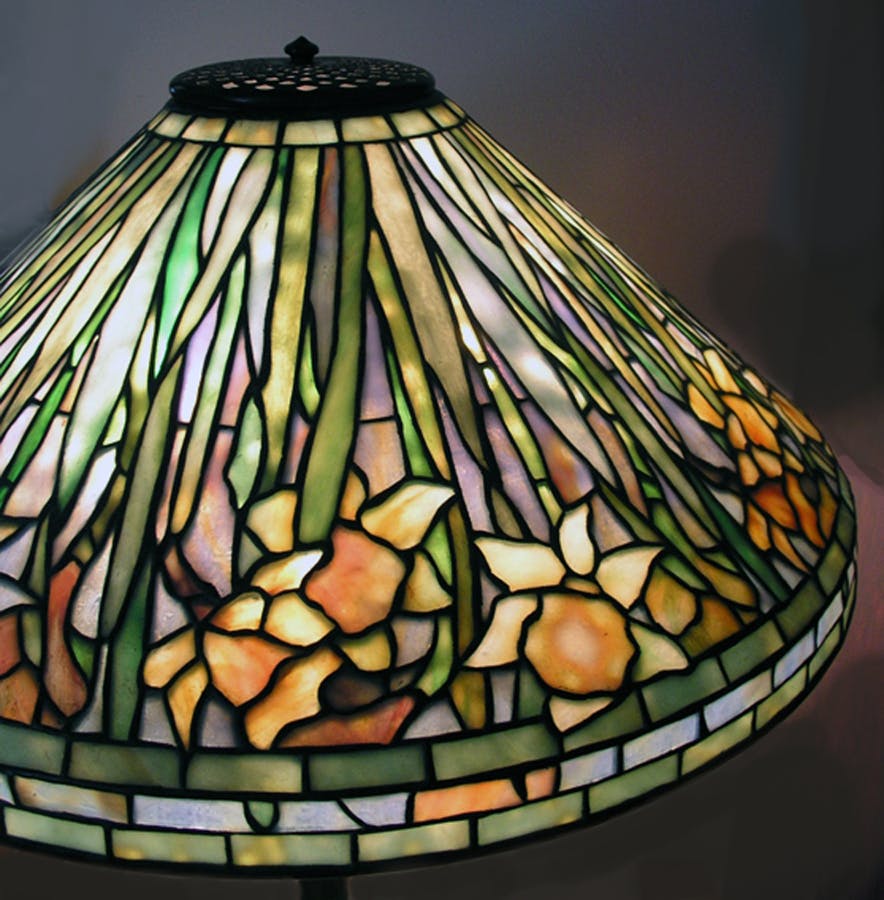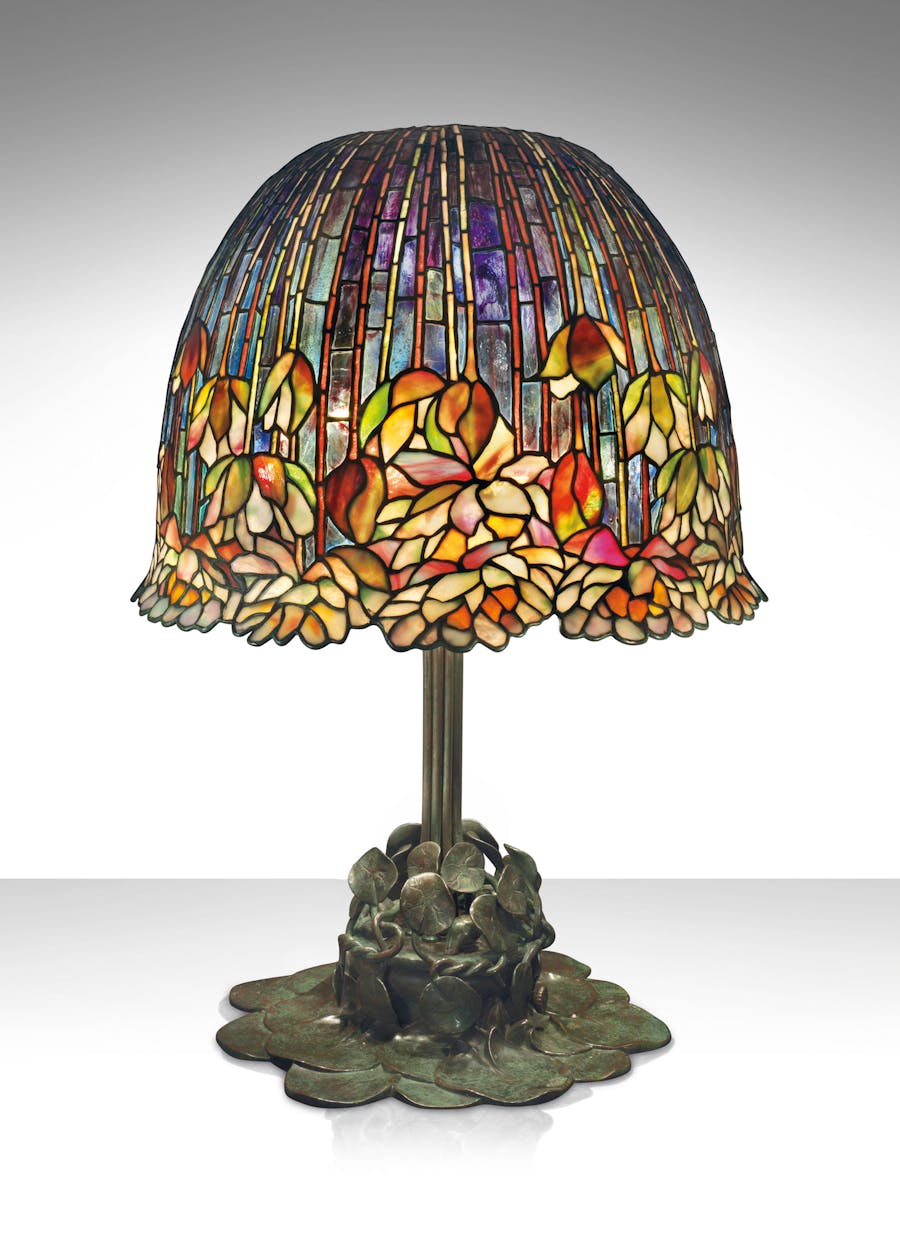Tiffany Glass: Art Nouveau Illuminated
Tiffany Studios glass is one of the most recognizable icons of the Art Nouveau period.
The leading American glassmaker at the turn of the 20th century, Louis Comfort Tiffany revolutionized the concept of art glass, creating stunning stained glass windows for churches, public institutions and other museums, as well as smaller scale lamps, chandeliers and more for households both in the US and Europe.

Tiffany started his career as a painter and studied with Hudson River School artists, his fascination for nature influencing his later passion for glassmaking. His father, Charles Tiffany, started the famous jewelry business Tiffany & Co. and Louis later became the Design Director there in 1902.
Related: Art Deco: The Great Celebration

After being commissioned by President Chester Arthur to redecorate the White House state rooms, Louis Tiffany founded Tiffany Studios in 1885 and established a factory in Queens, New York in 1893. That same year, Tiffany introduced his lamps to the public at the World's Columbian Exposition in Chicago. Afterwards, these beautiful lamps became popular in Germany and later France when he collaborated with Parisian dealer, Siegfried Bing.
Tiffany glass is an Art Nouveau icon, known for its high quality, extraordinary color and beautiful patterns inspired by nature, as if paintings conceived in glass. The Art Nouveau style began in 1890 as a response to the Industrial Revolution and modernization, an ode to pristine nature and flowers, soft curvature, and swirling lines. The Art Nouveau style inspired painting, glass, jewelry, architecture and more between 1890 and 1910.

In 1888, Tiffany hired Clara Driscoll, who would go on to design some of the most famous Tiffany lamps, such as the Daffodil, Dragonfly, Wisteria and Peony series. She worked for Tiffany on and off for 20 years and was one of the highest paid women in any profession at the time.
Related: Tiffany: The King of Diamonds

Louis Tiffany's famous glass invention was the iridescent glass that he called Favrile, which he patented in 1894. It was a process that infused color into the glass, creating a unique shimmer that was inspired by ancient Roman and Syrian glass. At the Exposition Universalle in Paris in 1900 where Art Nouveau style was first exhibited in different forms, Tiffany won the grand prize for his Favrile glass.
Related: Venini: Glass and Light
His stained glass have adorned the ceilings and windows of many churches, museums and public buildings across North America. Some of his most famous masterpieces are the mosaic stage curtain of the Palacio des Belles Artes in Mexico City, the Angel of the Resurrection window at First Presbyterian Church in Indianapolis, and the idyllic landscape windows at the Metropolitan Museum of Art and Brooklyn Museum in New York.

Tiffany retired from the company in 1918 and Tiffany production ended a decade later in 1928. Today, Tiffany glass, especially the exquisite lamps, are some of the most popular echoes of Art Nouveau and harken to an era of fine craftsmanship and inspired design.

These lamps can achieve millions of dollars at auction, with the record held by the Pond Lily table lamp, which sold for $3.3 million at Christie's in 2018. It was designed in 1903 and was one of the most coveted Tiffany designs, inspired by the lily pond at Louis Tiffany's New York home.


